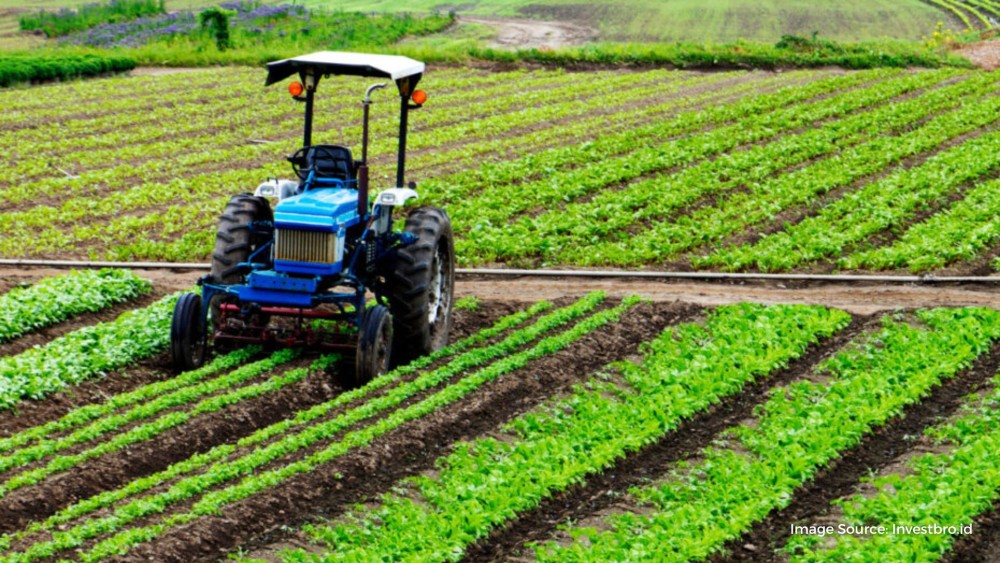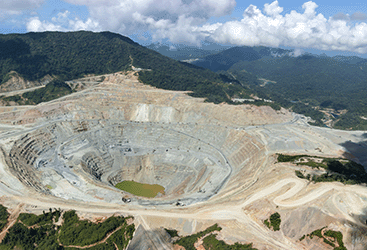Indonesia's Agriculture sector resilient amid medium-term risks
11 Oct 2024

Indonesia’s agriculture sector is navigating a period of substantial challenges, with factors such as volatile weather patterns, global commodity price fluctuations, and domestic structural issues presenting immediate obstacles. However, strong domestic consumption and strategic government initiatives should continue to maintain the sector's vital role in the Indonesian economy.
Global Price Trends: Downward Pressure
Globally, agricultural commodity prices have seen a decline throughout 2024 due to an oversupply of key crops following favorable harvests in major producing regions. Output from China, Brazil, and India for grains, oilseeds, and pulses has been high, and stocks-to-use ratios for wheat, canola, and soybeans remain above historical averages. The World Bank projects a 6% decline in food prices for 2024, with an additional 4% drop expected in 2025. Indonesia, as a net importer of some food commodities, is not immune to these global trends.
FAO Food Price Index
|
Year |
Nominal |
Real |
|
2014 |
115,0 |
106,3 |
|
2015 |
93,0 |
95,1 |
|
2016 |
91,9 |
97,8 |
|
2017 |
98,0 |
100,8 |
|
2018 |
95,9 |
94,2 |
|
2019 |
95,1 |
95,6 |
|
2020 |
98,1 |
99,2 |
|
2021 |
125,8 |
125,2 |
|
2022 |
144,7 |
141,5 |
|
2023 |
124,7 |
120,0 |
|
2024 |
120,1 |
113 |
|
Month |
Score |
Meat |
Dairy |
Cereals |
Oils |
Sugar |
|
2023-09 |
121,9 |
114,1 |
112,0 |
126,3 |
120,9 |
162,7 |
|
2023-10 |
120,9 |
112,5 |
114,6 |
124,8 |
120,0 |
159,2 |
|
2023-11 |
120,8 |
112,0 |
116,5 |
121,0 |
124,1 |
161,4 |
|
2023-12 |
119,2 |
111,7 |
118,7 |
122,8 |
122,3 |
134,2 |
|
2024-01 |
117,7 |
109,0 |
118,7 |
119,9 |
122,5 |
136,4 |
|
2024-02 |
117,4 |
112,5 |
120,7 |
113,8 |
120,9 |
140,8 |
|
2024-03 |
119,0 |
115,0 |
124,0 |
110,9 |
130,6 |
133,4 |
|
2024-04 |
119,3 |
116,7 |
123,8 |
111,6 |
130,9 |
126,6 |
|
2024-05 |
120,6 |
117,1 |
126,3 |
118,7 |
127,8 |
117,1 |
|
2024-06 |
121,2 |
118,6 |
127,9 |
115,2 |
131,8 |
119,4 |
|
2024-07 |
121,0 |
120,3 |
127,9 |
110,7 |
135,0 |
119,5 |
|
2024-08 |
120,7 |
119,2 |
131,3 |
110,2 |
136,1 |
113,9 |
|
2024-09 |
124,4 |
119,6 |
136,3 |
113,5 |
142,4 |
125,7 |
2014-2016 = 100
Source: FAO
Domestically, food prices have consistently fallen since May 2024, culminating in the country’s fifth consecutive month of deflation in September. A combination of delayed harvests, stemming from erratic weather patterns, and a policy environment that struggles to manage inflationary pressures contributed to the price decline. Despite these challenges, Indonesia's large domestic consumption base, bolstered by stable economic growth and increasing per capita income, continues to underpin the resilience of the agricultural sector.
Biofuel and Sugar Estate
A significant opportunity lies in the biofuels sector, particularly palm oil-based biodiesel. The Indonesian government’s implementation of the B35 and B40 biodiesel mandates, requiring a blend of 35% and 40% palm oil in diesel fuel, is a key policy aimed at reducing the nation’s reliance on imported fossil fuels.
A cornerstone of Indonesia’s agriculture, the country is the world’s largest producer and exporter of palm oil. The shift toward biodiesel not only stabilizes domestic palm oil prices but also offers a substantial reduction in greenhouse gas emissions. In 2023, Indonesia's crude palm oil (CPO) fund generated around US$2.5 billion from export levies, supporting the biodiesel sector. Production is projected to rise to nearly 18 billion liters by 2033, contributing to Indonesia's long-term energy strategy.
In addition to biofuels, Indonesia is also investing in large-scale agro-industrial projects. The government has announced plans to develop an Rp 130 trillion (roughly US$8.29 billion) sugarcane estates in Merauke, Papua, aimed at boosting domestic sugar production and reducing the country’s reliance on imports. These investments, while challenging to implement, have the potential to enhance Indonesia’s agricultural productivity and generate employment in underserved regions.
Climate Change and Input Costs
Despite the opportunities in biofuels and agro-industrial development, Indonesia’s agriculture sector faces several medium-term risks, the most significant being climate change. The El Niño weather pattern, which has persisted throughout 2024, has disrupted normal rainfall patterns across Southeast Asia. This has led to delayed planting and lower yields for key crops such as rice, palm oil, and sugar.
Moreover, input costs for fertilizers and energy remain elevated. The ongoing conflict in the Middle East has driven up global fuel prices, putting pressure on agricultural profitability. Fertilizer prices, while lower than their 2022 peaks, continue to strain farmers’ margins. These high input costs are further exacerbated by rising equipment and interest expenses.
Beyond the immediate risks, Indonesia faces structural challenges in its agricultural workforce. A significant proportion – over half – of the country’s farmers are over the age of 45, with the number of smallholder farms increasing over the past decade. This demographic trend presents a challenge for agricultural productivity.
Indonesian farmers by Generation, 2023
|
Gen-X (43-58) |
Baby Boomer (59-77) |
Millennial (27-42) |
Pre Boomer (over 78) |
Gen-Z (11-26) |
|
42.39% |
27.61% |
25.61% |
2.24% |
2.14% |
Source: BPS, INDEF
Addressing these challenges will require significant government intervention, particularly in the areas of agricultural education, access to financing, and infrastructure development. Encouraging younger generations to engage in farming and providing the necessary tools and support for smallholder farmers will be crucial to sustaining the sector’s long-term growth.
In the longer term, Indonesia’s agriculture sector is well-positioned to capitalize on its natural resources, particularly palm oil, and its large domestic market. However, addressing the structural challenges of an aging workforce and low productivity will be critical to ensuring that the sector can sustain growth and continue to play a central role in Indonesia’s economy.








